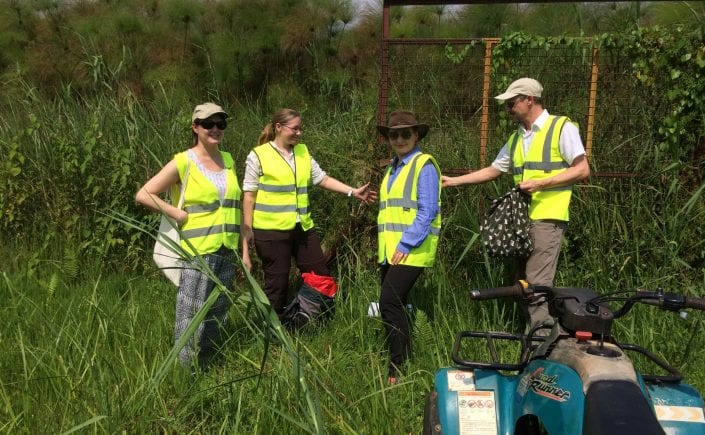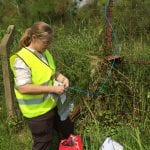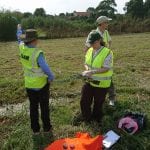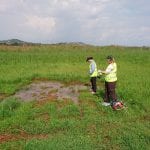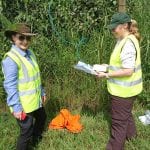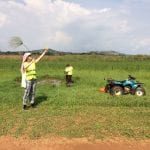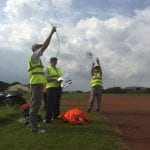Tue 22 January 2019
Part 1
Having planned out the next few days flights – to lakes/wetlands as well as fires – and with no point refining the plans based on the weather forecast because we don’t know exactly when we will be able to start flying, I’ve joined Rebecca again to do some air sampling. This time with intent, and with a full rucksack containing anything I might need (unlike yesterday).
We are currently in a taxi out to see a contact, Steve Forsyth, who works at Mission Aviation Fellowship – Uganda, and is based at an airfield by a papyrus swamp. MAF is an organisation that operates small aircraft to transport refugees from nearby countries like the Democratic Republic of Congo or Sudan. The swamp will be a source of methane and so will be a good opportunity to work out the carbon-13 fingerprint of such an ecosystem. The principal investigator of this project, Euan Nisbet, has sampled here before, so it will be good to find out whether the fraction of carbon-13 varies over time or is very consistent.
Getting out of the conference room is a good chance to stop obsessing over ever evolving weather forecasts and see some of Uganda. And I can make myself useful by taking photos of the sampling location at very least.
Part 2
We are on the way back from the airfield now. It was completely surrounded by papyrus swamp, which meant we could access it quite easily. We were escorted around the airfield by Ivan, who was essential in helping us not get our feet wet (we were not keen to lose a trainer in the swamp!) while getting as close to the swamp as possible.
The papyrus plants were extremely tall in places – close to 4m probably. Some areas were cut down to the stem, and they grow back in about a month according to Ivan. The stems themselves are very strong, and are excellent wind vanes of you ever are in need of one. Which I did, as I was taking wind measurements to accompany the air samples.
In all, we took 13 samples from locations close to the surface of the water up to about 2m high, all around the edge of the swamp, plus one background sample further away from it. This will allow us to find out the carbon-13 fingerprint of this papyrus swamp, where there were the highest methane concentrations. For example, the papyrus that was cut down to ground level may emit more or less methane than the fully grown area and maybe the measurements will give us an indication of that.
- Filling a bag with air from near the papyrus
- Sampling above the swamp
- Methane was bubbling up through the standing water
- A papyrus swamp was on the other side of the fence
- Novel wind direction observation using a stalk of papyrus
- Simultaneous air sampling and meteorology observations
